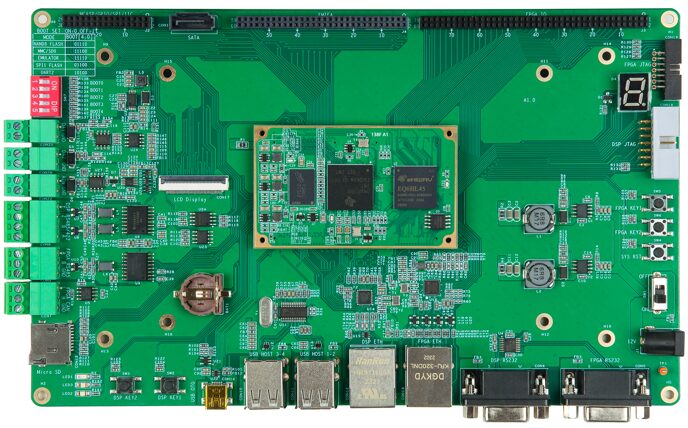

SOM-XQ138S core board
▪︎ Based on TI OMAP-L138 (fixed-point/floating-point DSP C674x + ARM9) + FPGA processor development board;
▪︎ OMAP-L138 is TI’s TMS320C6748 + ARM926EJ-S heterogeneous dual-core processor, with a main frequency of 456MHz, capable of up to 3648MIPS and 2746MFLOPS of computing power;
▪︎ The FPGA uses the eHiChip6 family EQ6HL45 series chip from Zhongke Yihai Micro, or Xilinx Spartan-6 series chip XC6SL16, upgradeable to XC6SL45. (Yihai chip EQ6HL45CSG324 pin-to-pin compatible with Xilinx Spartan-6 series XC6SLX9, XC6SLX16, XC6SLX25, XC6SLX45);
▪︎ TI OMAP-L138 serves as the main processor, enabling operating system operation, algorithm processing, instruction control, and other functions;
▪︎ FPGA acts as a coprocessor, enabling parallel collection, external signal processing, interface conversion, and other functions;
▪︎ OMAP-L138 and FPGA communicate via EMIF, SPI, or UPP interfaces;
01
Physical Detail Display
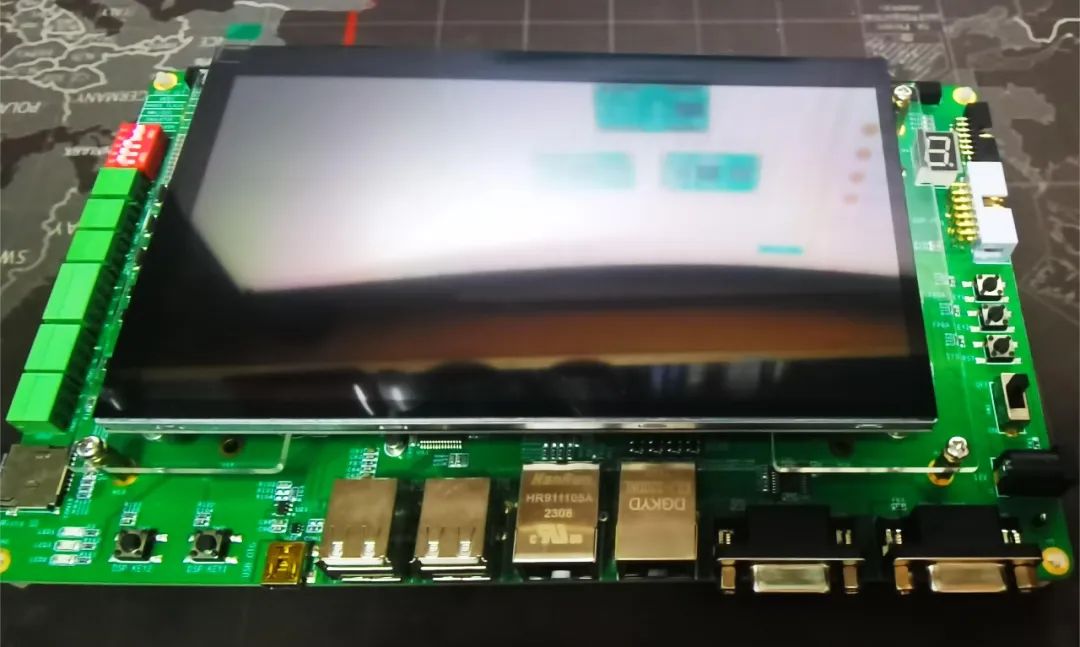
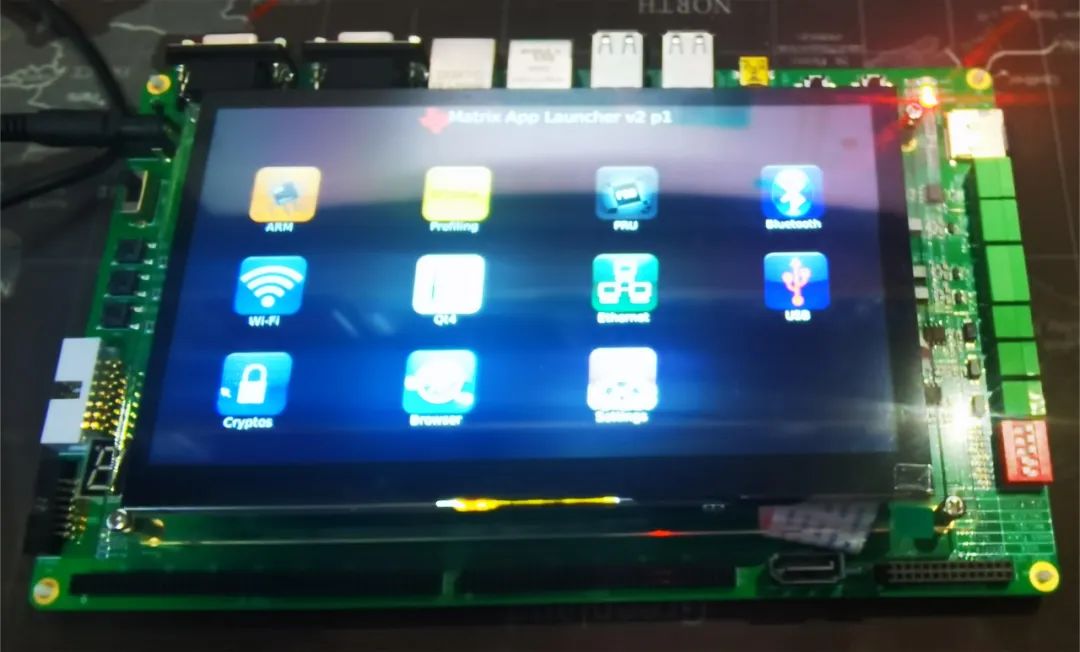
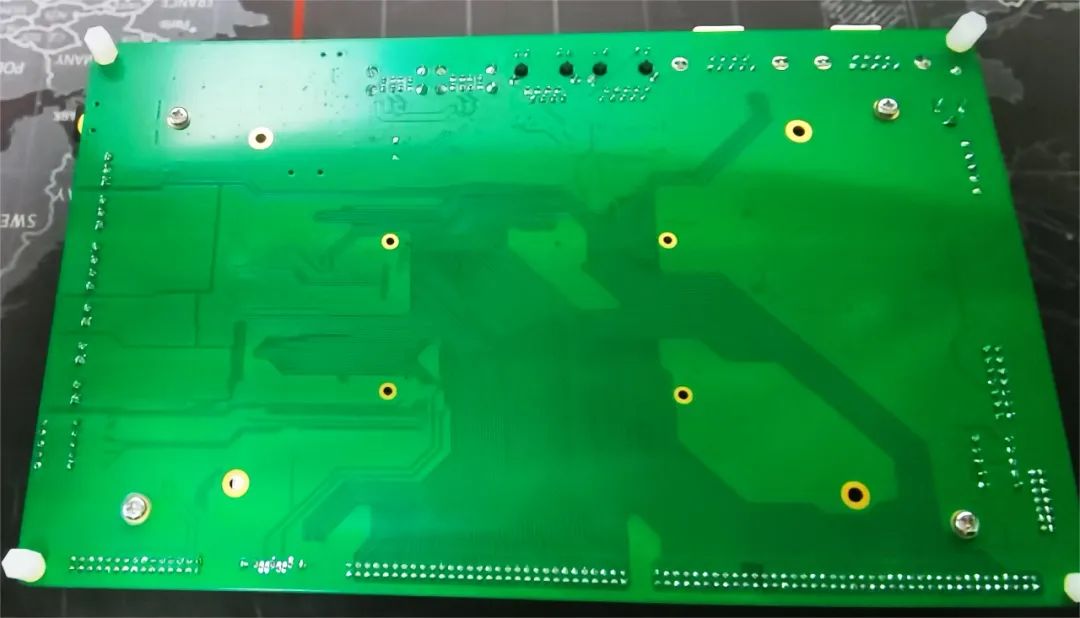

By chance, I got the opportunity for this evaluation, which is the first evaluation at the beginning of 2024. The board is very high-end, being an ARM + FPGA + DSP tri-core heterogeneous platform. This configuration can meet the majority of demands for image processing devices, industrial control, intelligent power systems, handheld detection instruments, audio and video data processing, high-precision instruments, and medical instruments. Let’s take a look at what this high-end development board looks like!
First, let’s look at the board itself, front and back; the layout is clear with components on the front, and the back shows dense wiring, neat and meticulous, undoubtedly industrial-grade. The external interfaces are distributed around the board, making it convenient for users. In the middle is a 7-inch screen.
02
Specifications
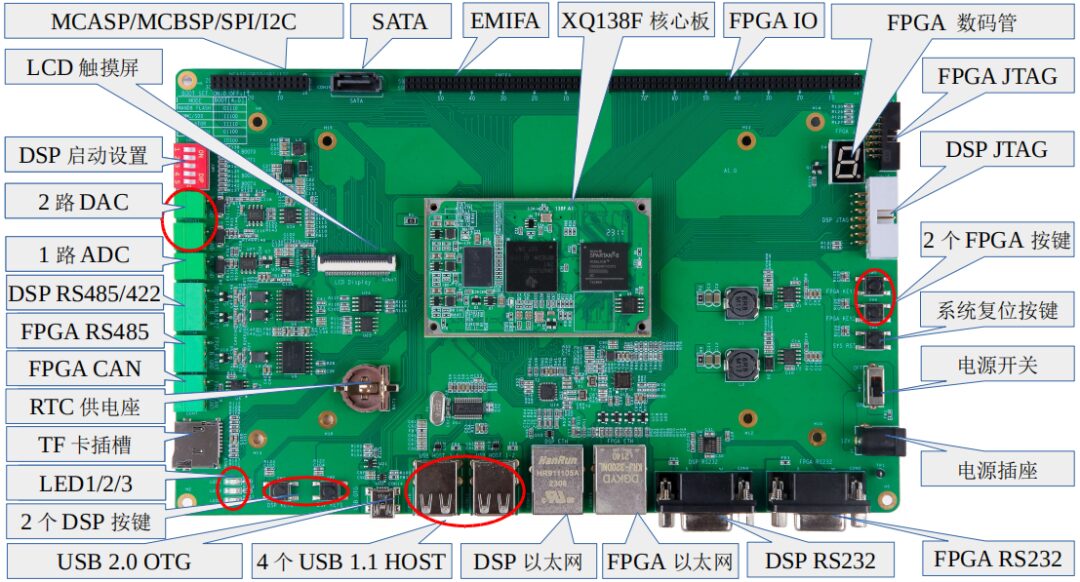
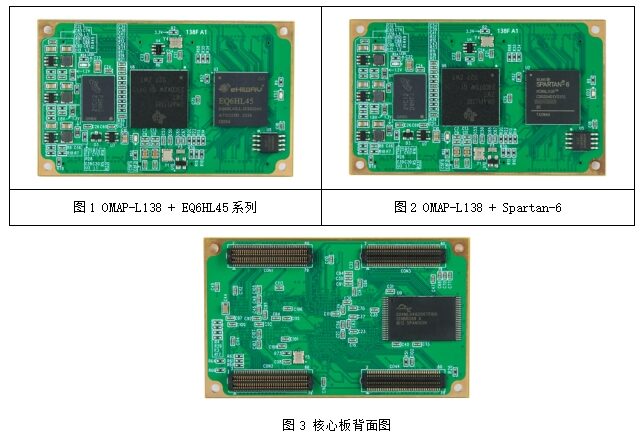
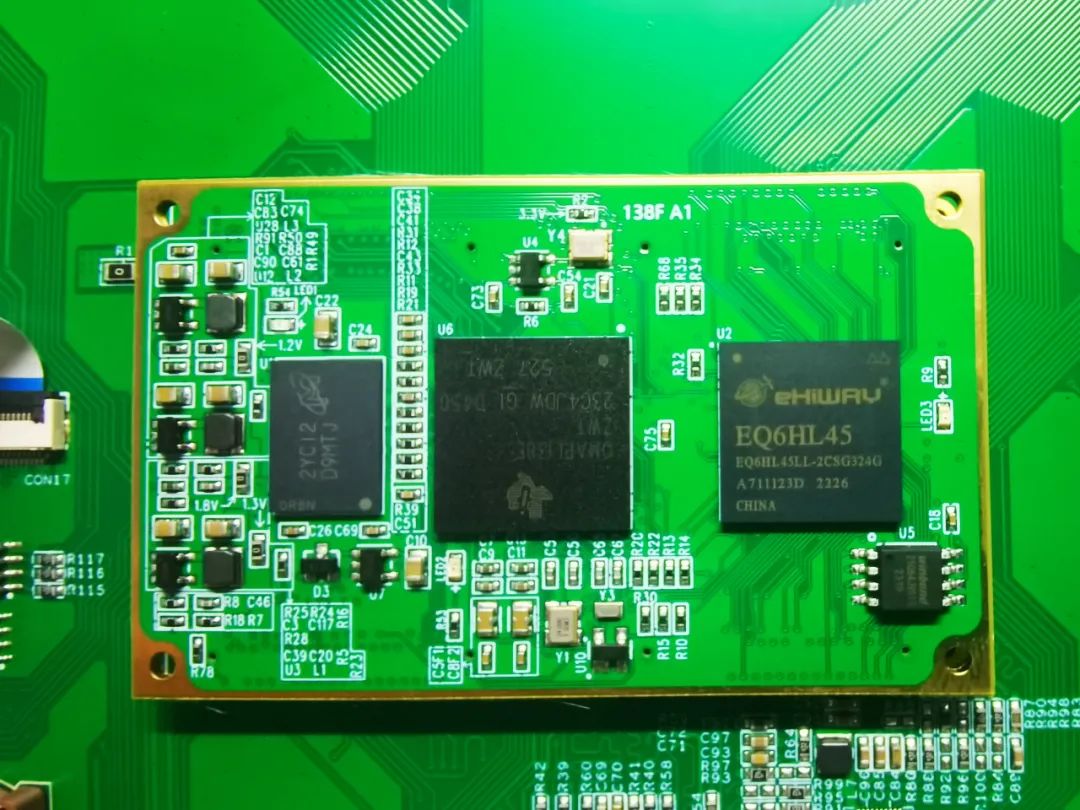
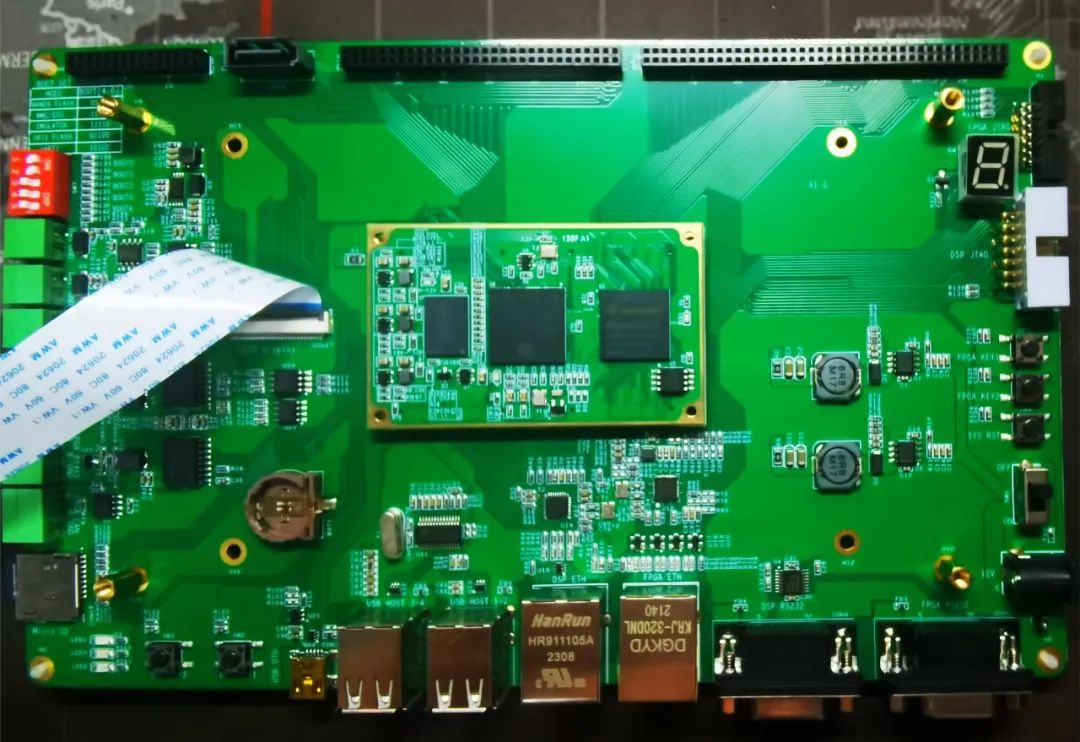

Here, I want to mention that the SOM-XQ138S core board’s FPGA can have two choices: one is the Xilinx Spartan-6 series, and the other is the domestic FPGA EQ6HL45. The board I received is equipped with the domestic EQ6HL45 series.
| DSP Processor | OMAPL138 (TMS320C6748 + ARM926EJ-S), up to 456M frequency |
| FPGA | Xilinx Spartan-6 XC6SL16, upgradeable to XC6SL45 (can be equipped with domestic FPGA) |
| Memory | 128MB industrial-grade DDR2 (256MB optional) |
| Storage | 4Gb industrial-grade NAND FLASH for DSP storage; 64Mb industrial-grade SPI FLASH for FPGA configuration. |
| B2B Connector | 2 80pin 0.5mm pitch female connectors, 2 80pin 0.5mm pitch male connectors |
| DSP Emulator Interface | 1 14Pin JTAG interface |
| FPGA Debug Interface | 1 10Pin JTAG interface |
| SATA Interface | 1 7pin |
| Network | 2 in total, 1 10/100M adaptive RJ45, 1 10/100M/1000M adaptive RJ45 |
| RTC | 1 RTC power supply seat, powered by a 3.3V button battery |
| Buttons | 1 DSP reset button, 2 DSP GPIO buttons, 2 FPGA IO buttons |
| LCD | 1 LCD touch screen interface, 0.5mm pitch, 40Pin |
| Boot Selection | 1 5bit DIP switch for boot selection |
| USB | 4 USB 1.1 HOST interfaces, expandable via USB HUB; 1 USB 2.0 OTG interface. |
| Serial Port | 2 DSP RS232 level serial ports (UART1, UART2), UART1 also outputs TTL level interface; |
| 1 FPGA UART TTL interface. | |
| TF Card | 1 TF card slot |
| LED | 1 red LED power indicator |
| FRAM | 1 ferroelectric memory, access speed faster than E2PROM, no need to erase before write operation |
| Digital Tube | 1x 14pin Tl Rev B JTAG interface |
| Test Point | 1 grounding post for oscilloscope grounding, convenient for signal measurement |
| Expansion | 2 80pin 2.0 pitch female connectors, output EMIFA, MCASP, MCBSP, SPI, I2C and other expansion signals, |
| Operating Voltage | 1x 5V, 2A, USB powered |
| Power Switch | 1 toggle power switch |
| Power Interface | 1 DC power socket, outer diameter 5.5mm, inner diameter 2.1mm |
03
Application Scenarios Introduction

04
Unboxing Test

As we can see, the resources are very rich; the core board itself is industrial-grade, and the bottom board has all peripherals and IO connected externally. It can serve as a product-level development research and also has entry-level teaching functions, reflecting the designer’s attention to detail. As a core board targeted for industrial applications, it is equipped with commonly used industrial communication interfaces such as 485, CAN, 232, and Ethernet, and can also expand ADC applications. The core board itself also has watchdog functionality.
Now let’s look at the packaging; of course, many people think that one only needs to look at the board itself, but I believe that the packaging reflects a design company’s attitude. Many manufacturers only require packaging to meet transportation needs and protect the board from damage, but the packaging from Star Embedded is one of the more meticulous manufacturers I have seen. First of all, the packaging is very sturdy, and the design is quite elegant. It is also quite large, about the size of two books. Inside, there are pearl cotton dividers, and the accessories are neatly stored in a separate box, making it clean and tidy. Additionally, a product manual is included to assist users in selecting models.
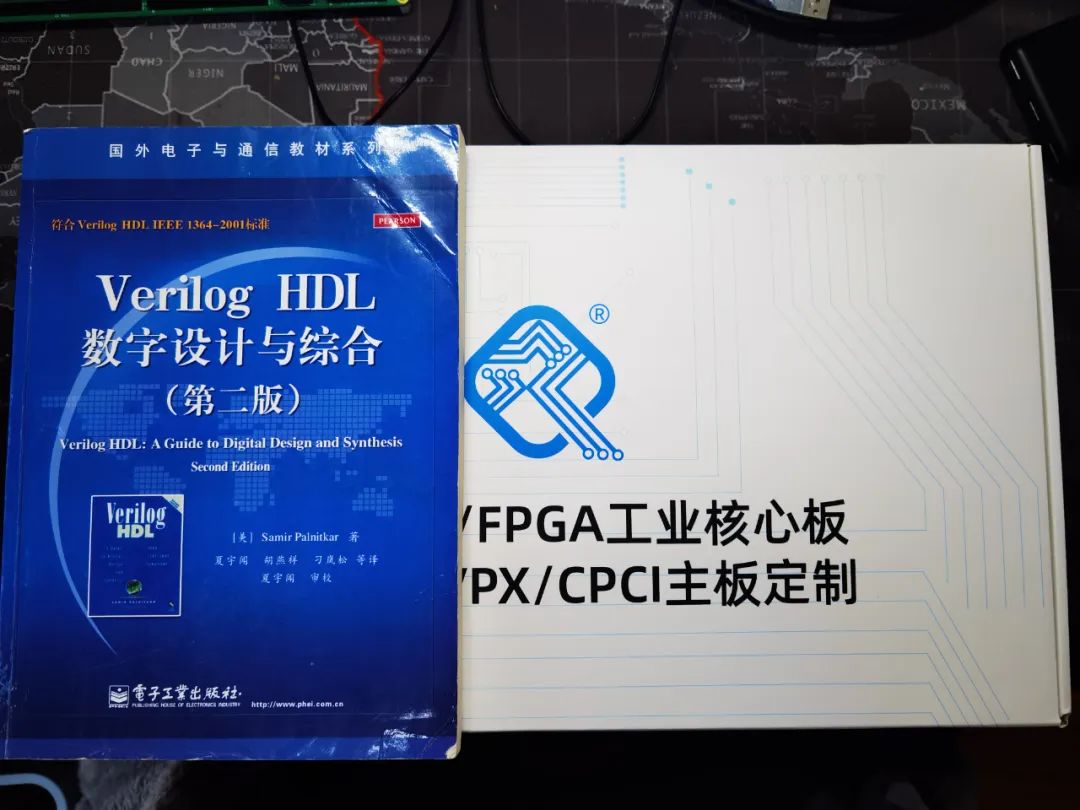
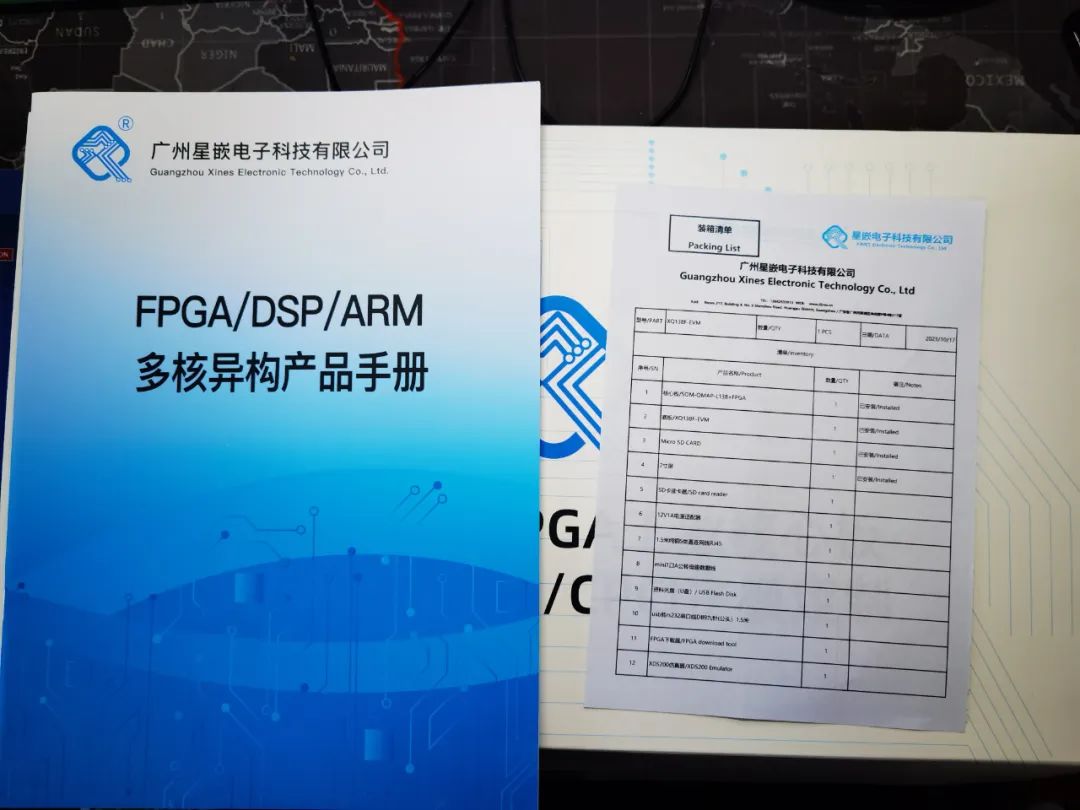
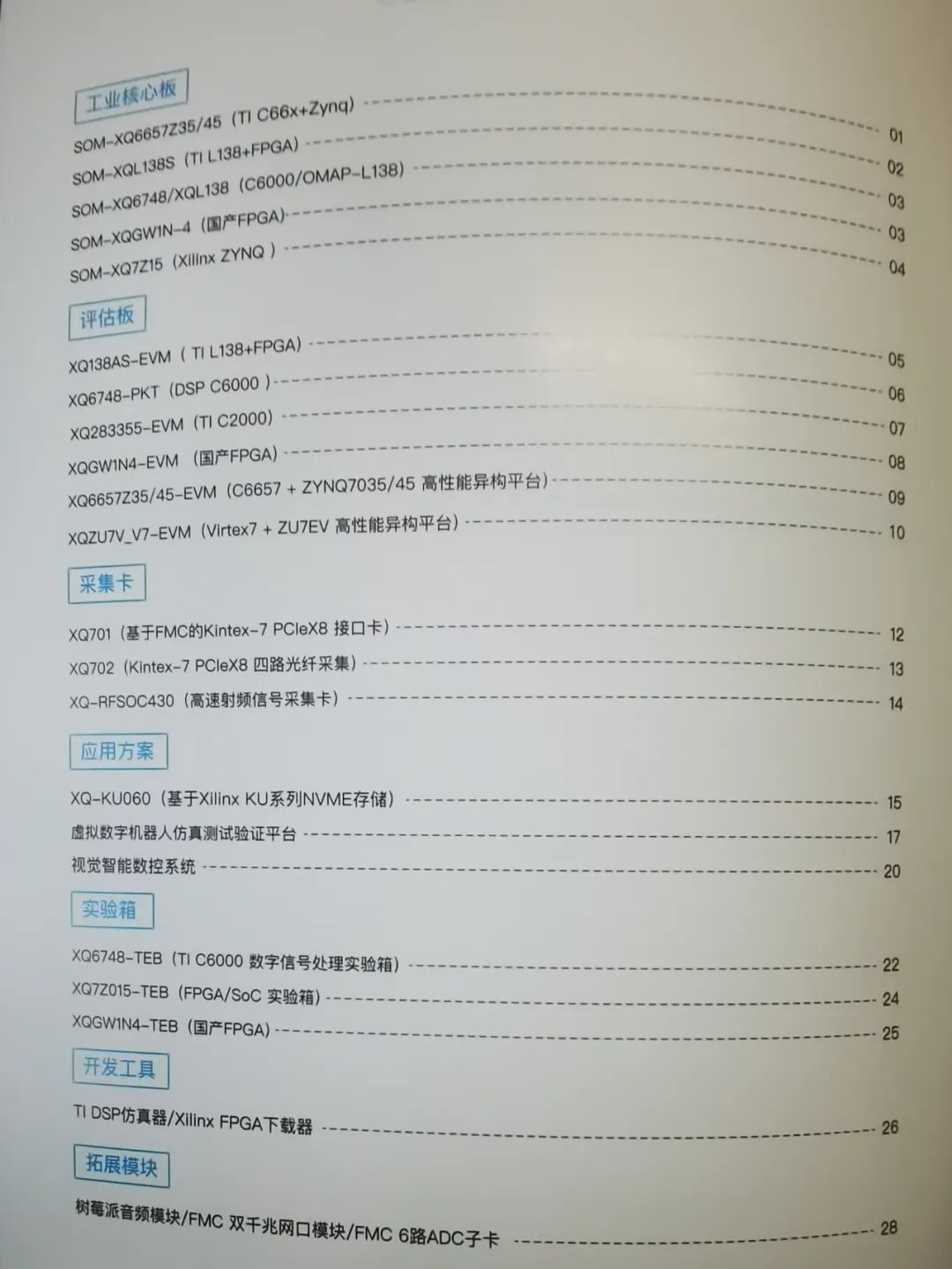
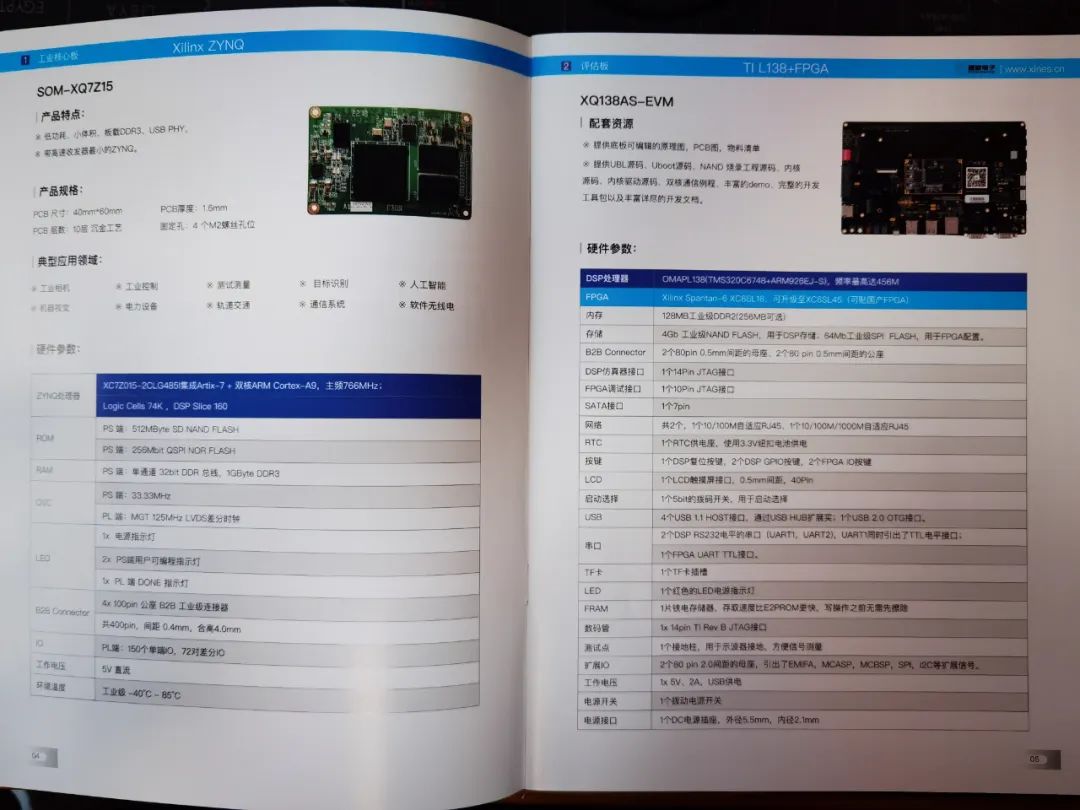

Finally, regarding the accessories, Star Embedded’s official website provides all the accessories that developers need, including USB conversion cables, serial port to USB converters, DSP programmers, FPGA programmers, and even a TF card programmer. Of course, the main one is the board power adapter of 12V 1A. Additionally, the board development materials are directly provided on a USB drive by the official team, eliminating the need to download from cloud storage, which is great, as downloading materials can be time-consuming without a membership. OK, let’s take a look at the actual items:
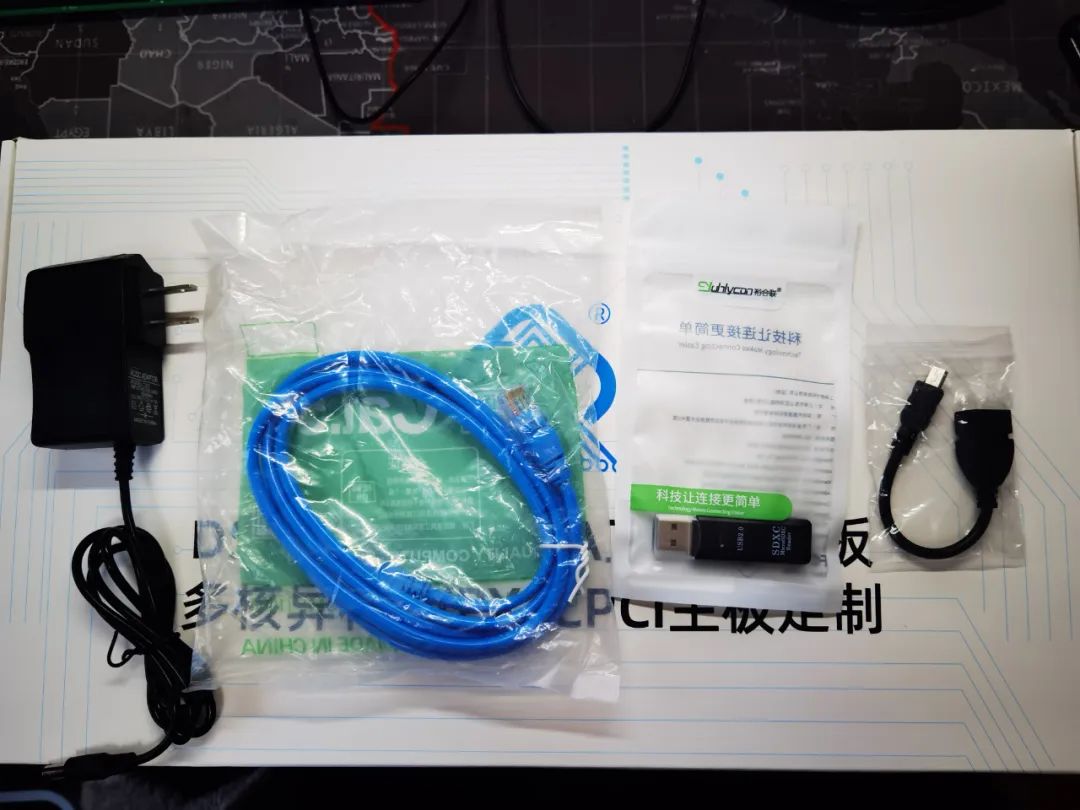
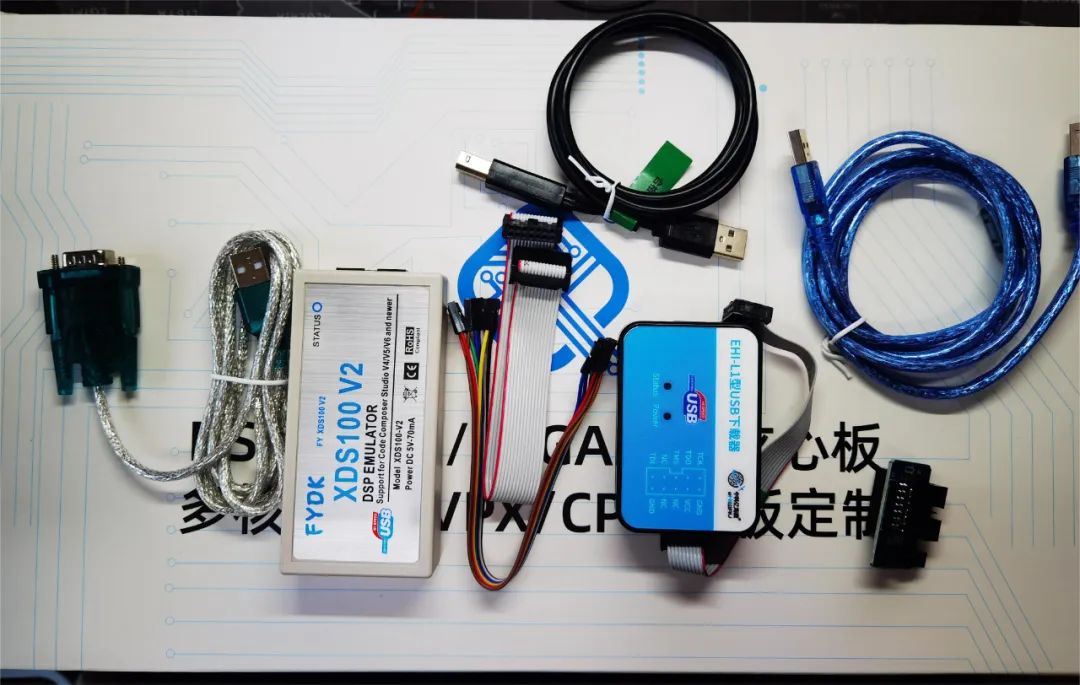
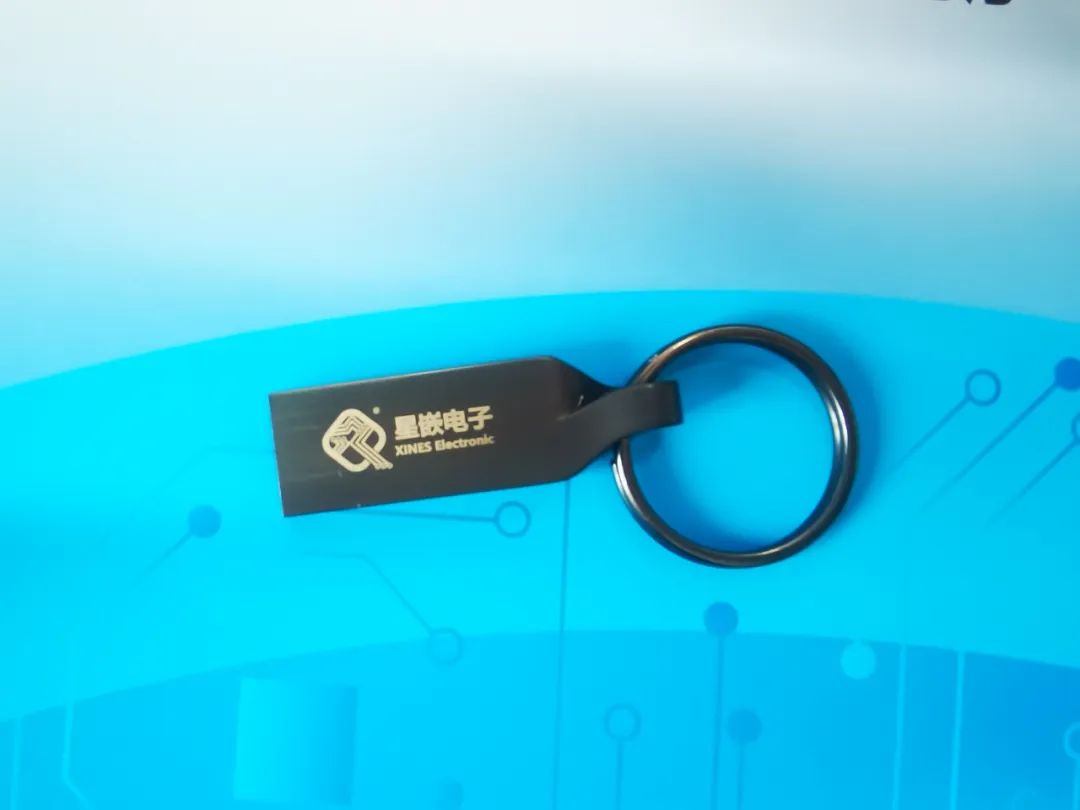






 AD Packaging Collection
AD Packaging Collection




 EMC Knowledge Collection
EMC Knowledge Collection






 Classic PPT Collection
Classic PPT Collection


 Basic Knowledge of Electronic Components and Selection Collection
Basic Knowledge of Electronic Components and Selection Collection


 Fun Testing Series
Fun Testing Series


 PCB Knowledge Base Collection
PCB Knowledge Base Collection

 Click to Encourage a bit for the author!
Click to Encourage a bit for the author!